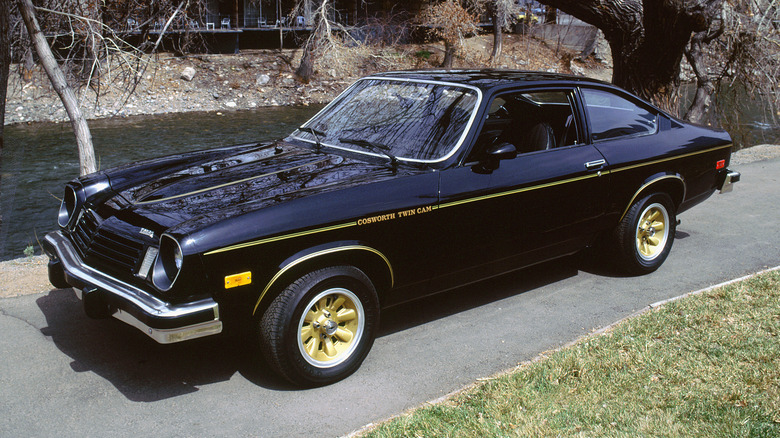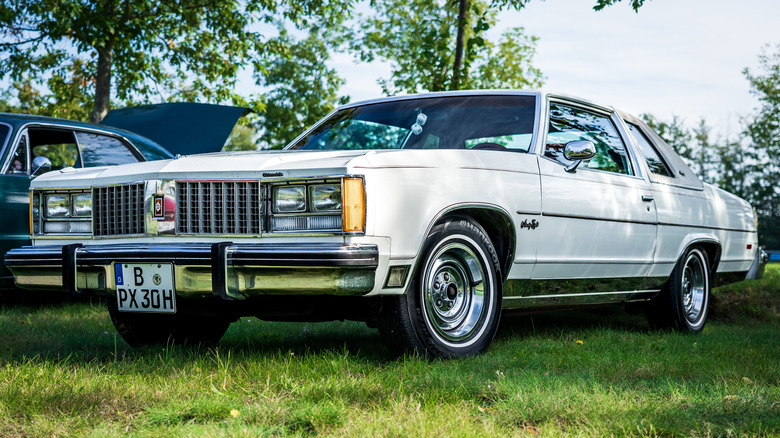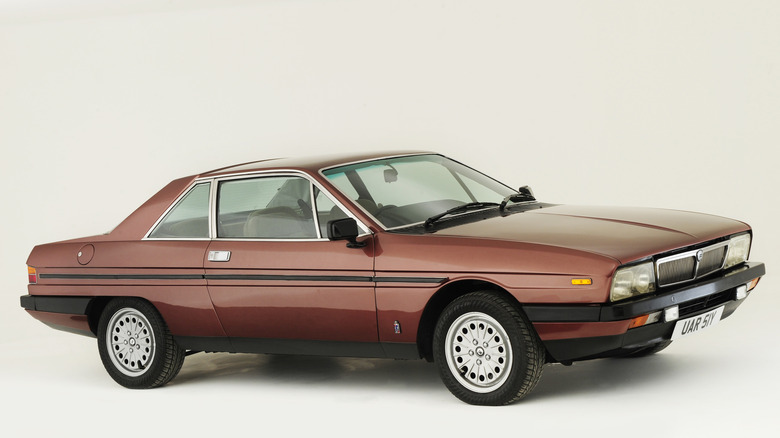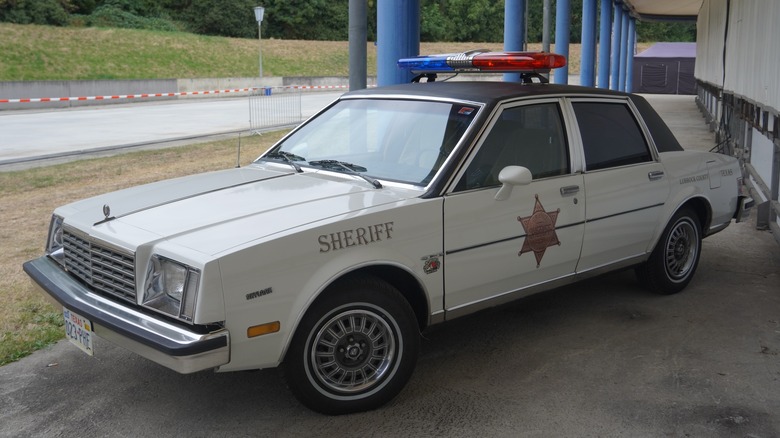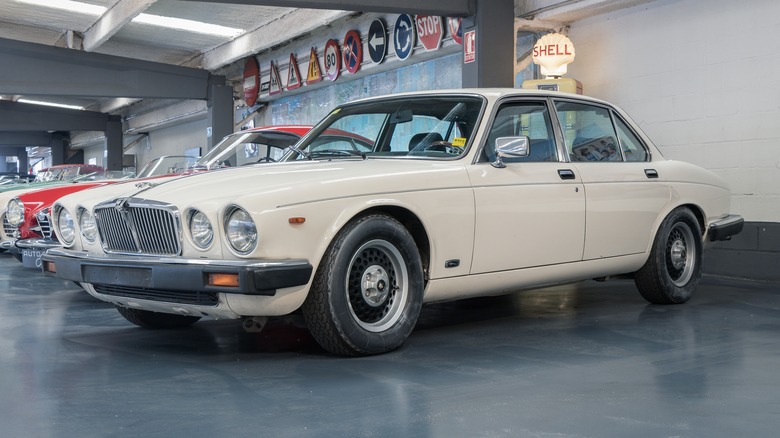The 12 Worst Cars Ever Made
There exists stiff competition for wearing the crown of the worst car ever made. At times, it seems some manufacturers are actively participating in this sort of competition, although they would never admit it. With the huge number of people involved in developing a car and getting it to market, it seems logical someone would speak up and mention glaring flaws before spending millions, if not billions, of dollars to get it made. However, the corporate structure and management style plays a huge part in how such things can happen. Toyota, for example, has a corporate structure that values feedback from lower-level employees all the way down to the workers on the factory floor itself. Conversely, in John DeLorean's book "On a Clear Day You Can See General Motors," he lambasts the management of GM through the '60s and '70s as more of a conglomeration of competing frat boys vying for power rather than a cohesive team of executives and skilled laborers worker toward a common goal.
Many factors can go into assessing a bad car. Two attributes can make or break a car's selling potential: styling and reliability. Poor styling is one of the things that is apparent immediately and can kill a car from day one, while reliability often is not known for a few years after thousands of unsuspecting customers have already laid out substantial investments. Another less tangible facet that makes a car bad is its inability to fulfill a purpose. For example, family cars without enough space to haul the stuff that goes with childhood, such as equipment for sports or band. Other cars can be deemed bad because of ergonomics. Having uncomfortable or awkward seating and controls can really sour the driving experience. Looking at the total package and making an assessment considering all of these factors, we present the 12 worst cars ever made.
Chevrolet Vega
Small cars were the thing for American carmakers in the early '70s. Chevrolet's project to fulfill this market segment was called the Vega. It was an attractive, sporty little car that, when it debuted, had plenty of potential. Chevrolet also had a lot riding on the car, as it would carry General Motors' vision for smaller cars going forward. Problems started early for the Vega. DeLorean was promoted to Chevrolet's division manager in 1969 and could see immediately the Vega program was flawed. He dedicated a chapter in his book to the fiasco that enveloped the whole process of getting the Vega to dealers.
The Vega's styling is excellent and it's nice to drive, even though it is on the slow side. Buyers snapped them up right away, leading Chevrolet to sell 277,700 units in the first year. Unfortunately for Chevrolet, problems with the cars started to show up right away. Rust was a huge problem and, according to Popular Mechanics, front fenders would need replacing after a couple of seasons in the cold Northeastern winters. Even owners in the dry West Coast had issues with rust where this was not a typical problem. Also, the cooling system failed to cool properly, leading to head gasket failures and distorted cylinders causing total engine failure. The Vega was an innovative product that even had its own train cars developed that would increase shipping capacity and efficiency. Although many problems were ironed out later in production, the damage had been done. What should have been a great car was killed by dysfunction within the corporation.
Pontiac Aztek
Pontiac debuted the Aztek in 2001 and kept it around for four years. It was a car that struck a chord with the press and the public, and drew immediate reactions from everybody. In 2003, MotorTrend wrote, "There's nothing subtle about the Aztek," and added the byline to the article, "Minivan meets Creature from the Black Lagoon." No matter how good this vehicle was, comments about the styling overshadowed everything. One thing that can be said confidently about the car is that it is polarizing. Some people love it, while many hate it.
The Aztek is a mid-size SUV with a 3.4-liter V6, seating for five passengers, and a fairly generous cargo capacity. It is a capable SUV that was geared toward those with active lifestyles and could be had with several options, including all-wheel drive and an accessory tent that turned the cabin into a sleeping space. And, to most, it is hideous.
In a Car and Driver interview with former GM CEO Bob Lutz, he described the perils of the Aztek coming from GM trying to escape the reputation that it built boring cars and was afraid to do something bold. However, in the company's attempt to break the mold, and with a totalitarian management style in which subordinates were afraid to speak up, the Aztek got the green light, despite failing early consumer test panels. Management refused to see a failure unfolding in front of them and used arbitrary guidelines to measure success while ignoring what would make a great car that sells.
Oldsmobile diesel
This entry covers a range of cars, as the engine ruins the whole car, and the same engine was used across the lineup. The '70s brought many problems to auto manufacturers including a fuel crisis, new emissions and safety regulations, and a recession paired with inflation. GM pushed its divisions to innovate, and Oldsmobile chose to follow its German rivals by adding diesel powerplants as an option across the brand. It did not turn out well.
While GM had a division that had been producing tough and reliable heavy trucks for decades, Oldsmobile chose to put its own engineers to task engineering a new diesel engine (via Motor Biscuit). The manufacturer came up with V6 and V8 engines to be offered for the 1978 model year. Despite the common rumor that the V8 was just a gas small block turned into diesel, it was a new design — but it did share some of the same dimensions as its gas brethren. However, the same head bolts from the gas models were used in the diesel and this caused the heads to fail due to the much higher pressure inherent in a diesel engine. Penny-pinching also lead to the omission of a water separator, a mistake that proved fatal.
The cars' terrible performance tarnished the Oldsmobile reputation and sent angry customers to other brands in droves. As a result, this failure single-handedly killed American diesel-powered cars until the modern day.
Maserati Biturbo
A long history of making winning race cars and some of the most beautiful exotics of the '50s and '60s was not enough to help Maserati through the new technological age of the '80s. Case in point is the much-maligned Biturbo. While Maserati had historically produced elegant sports cars and road racers, the company wanted to step into the luxury sphere in the late '70s. The Biturbo was meant to be a down-market car meant to be a more affordable alternative to the manufacturer's other executive cars, according to Motor1.com. It turned out to be an attractive and clever car, being the first production car to offer twin turbos from the factory. Buyers were impressed, for a time.
The Biturbo was a great-looking car with a well-appointed cabin, but, when inspected closely it was evident that quality was poor. Problems with the engine manifested early on, and the engine was finicky and tended to leak. Cost-cutting decisions such as releasing early cars with carburetors and lacking intercoolers contributed to difficulties in keeping them running properly (via Drivertical). Other low points were bad fuse boxes, cracked interior panels, and poor fit and finish. The long list of notorious problems sullied the brand's name to the point that Jeremy Clarkson on "Top Gear" felt the best thing to do with a Biturbo was to crush it with a garbage skiff. Despite the early setbacks, Maserati corrected these problems and ultimately built it into a marvelous special edition called Shamal.
Lancia Gamma
Lancia is one of the longest-lived Italian automakers most Americans have never heard of. But Lancia has made some mesmerizingly terrific cars, such as the Stratos. According to parent company Stellantis, Lancia began in 1906 in Turin, being known early on for innovations in the auto industry and for creating winning race cars. The Lancia Gamma of 1976 to 1984 is a good example of Lancia's unmistakable 1970s style. It uses a combination of curves and straight lines popular in Europe at the time to produce a uniquely handsome car with the distinctive styling of the period. But, it has an issue.
The Gamma received a flat-four engine of either 2.0-liter with 120 horsepower, or 2.5-liter making 140 horsepower, typical figures for the day. This design has a fatal flaw in its power steering, according to Jalopnik. For reasons unknown, engineers chose to drive the pump off of a camshaft, which could cause total engine failure complete with bent valves by turning the wheel to full lock, especially when cold. This might only affect it in somewhat rare circumstances, but your car should operate under any circumstance without total engine failure. Building the engine with a timing chain instead of a belt could have avoided this. James May elaborates on the Gamma on "The Grand Tour," claiming its thermostat was misplaced, causing overheating, and that poor gaskets allow water and oil to combine to disastrous effect.
Triumph Stag
Carmaker Triumph was responsible for creating some of the most engaging and fun driving vehicles from the British Isles, but the Stag is a lesser-known model. According to Auto Evolution, the Stag's first year was 1970. It was designed by famed Italian designer Giovanni Michelotti, and it is a gorgeous ride. Triumph meant for it to compete with other grand touring cars of the time. Due to new regulations for convertible cars in the U.S., the Stag employed a unique rollbar with a t-top-like design. It is a clever car with a not-so-clever engine.
Being a GT car, Triumph felt it needed more grunt than its four-cylinder engines could provide. Triumph also suffered from small budgets for development due to its small size as a carmaker. Therefore, engineers used existing plans for the slant-four engine used in the Dolomite car and basically fused two blocks into one, creating a 3.0-liter V8. The engine they ended up with suffered from multiple failures. The water pump was mounted high on the engine and when coolant ran even a little bit low, engine cooling stopped and it overheated. This issue was exasperated by having small cooling passages resulting from other engineering compromises. The list of problems with this engine is a bit lengthy and resulted in the car only lasting a few years, with the Triumph 3.0-liter V8 often landing on top of lists of worst engines ever made (via Driving.ca).
Chevrolet Citation
The X-body platform was supposed to be the car that brought GM out from the difficulties of '70s carmaking. Being the first front-wheel-drive car from Chevrolet, it overpromised and underdelivered.
The story of how the Citation came to be reads a bit like a saga, however, it contains some recognizable refrains. MotorTrend dug deep into what ailed the X-body, which also included models from Oldsmobile, Pontiac, and Buick. Development time was shortened, much like the Vega and Pinto before it (the latter subject to deadly recalls). All the different divisions were forced by management to work together by developing different components separately, resulting in a car loaded with problems. Some issues had to be fixed at the factory before the cars even left, such as weak suspension welds. Problems with the car came to a head when the U.S. Justice Department sued GM over repeated complaints about brakes suddenly locking up while braking.
While the lawsuit was eventually dismissed, the reputational damage was done. Sales fell sharply until the program was axed. The poor quality in general likely helped the Japanese companies cement their position in the American market and led the Citation to be a long-forgotten memory.
Chevrolet Series M
Chevrolet has built a few stinkers over the years, and most of them are remembered as happening in the latter part of the 20th century. Chevrolet's ability to build crappy cars is nothing new. The Ford Model T presented the biggest competition to domestic automakers in the early 20th century, and Chevrolet had to come up with new ideas on how to build a car that could knock Ford off its perch. Charles F. Kettering, engineer of the Cadillac electric starting system, led a project to produce an air-cooled engine for a low-cost Chevrolet. Eliminating the water pump and associated hardware could lower costs considerably. His engine broke from convention by installing thin copper fins to the cylinder blocks instead of fins being included in the engine casting. Theoretically, it would increase the cooling area and work more efficiently (via Mac's Motor City).
Kettering's idea did not work in practice. The engine created was smaller than others at the time and was overworked, creating more heat and detonation as a result. Furthermore, other divisions tested the engine with failed results, but GM executives implicitly trusted Kettering and he went forward with the design anyway. In the end, according to Hemmings, production of 1,000 units began with only a handful of cars being completed — 239 cars were scrapped before leaving the factory. A couple of hundred cars had been sent out as experimental units were recalled by Chevrolet and destroyed as well. Air cooling would not be tried again by the company until the Corvair of the '60s.
Trabant
Most people familiar with automobiles from the former communist states of Europe would not expect any shining examples of great cars to be included. Most of them could be on a list of bad cars, but none so much as the East German Trabant, a miserable little car from a society accustomed to misery. The East German government was dedicated to the ideals of socialism, but it also wanted to modernize its industry. The automobile served as the perfect project to project industrial power while providing the people with a practical, durable good. But it was communist.
Faced with a shortage of some raw materials and technology from the West, the German Democratic Republic, or DDR, employed engineers to come up with a car they could produce. They got a small car powered by a 499cc two-cylinder, two-stroke engine, and no options. The body was made from Duroplast, a sort of plastic made with cotton fibers and resin. It was embarrassingly simple, poorly constructed, and the wait time to purchase a brand new car ran about 10 years. Trabants were manufactured mostly unchanged from 1963 until Germany was unified in 1991 (via Silodrome). Today, there is a small but dedicated fanbase to the car purely for nostalgia's sake, because there is nothing to like about it beyond getting you where you want to go (if it does not break down on the way).
Tata Nano
Tata is a large manufacturer of trucks and cars in India, and was founded in the late '40s. Originally manufacturing trucks based on licenses from European companies, it has since become an independent company producing vehicles of its own designs, according to the company's website. As an automaker in a developing nation, its domestic products have to be price sensitive and affordable to lower-income populations. And in 2009, Tata introduced the world to the Nano, the cheapest car in the world.
CEO Ratan Tata was bothered by seeing too many families riding scooters in his country in an unsafe manner, with whole families squeezed together on just two wheels. He envisioned a car that could be bought for about the same price as a scooter and at least get these families in a moderately safer vehicle. It cut absolutely everything but the bare minimum to reduce costs. The Nano has no rear hatch or trunk, no airbags, no radio, or style. Fuel must be filled by opening the hood for access, and the tires are tiny. The quality was poor and reports of fires started going around, with Tata acknowledging an electrical issue causing them (via Quartz India).
Sales never took off and Tata also acknowledged that advertising it as a cheap car turned away buyers. Plans to import it to the U.S. shockingly never materialized. Even in a country like India, where many people subsist on the most meager of wages, people did not want to be associated with something so cheap.
Jaguar XJ12
British carmaker Jaguar is responsible for some of the most elegant, attractive, and sought-after cars in the world. It has also participated in motorsports throughout the years, fielding many winning cars. Starting in 1971, Jaguar offered its XJ series of sedans, which are probably the most attractive sedans Britain ever made. The XJ offered the best of both worlds by being opulent with plush leather interiors while offering spirited driving from responsive handling and powerful engines. According to Jaguar Heritage, the company had working plans to develop a V12 engine as early as 1952, but did not execute a workable design until 1971 with the debut of the XJ6 and XJ12.
Jaguars have never had a reputation for being reliable vehicles. Hagerty explains most classic Jaguar buyers gravitate toward the XJ6 as the V12 car is difficult to maintain. That engine has overheating issues made worse by catalytic converters raising temperatures under the hood, and rubber hoses in the V that are almost guaranteed to fail. The highly complicated cooling system causes head gasket failures and just having air conditioning can also warm cylinder heads. Earlier models also used Lucas electrical systems that are well-known for cascading failures, and the carburetor models can melt catalytic converters. The bottom line is that Jaguar XJ12 ownership can require an engineering degree to be capable of keeping one running, but even experienced engineers will find themselves pulling their hair out and replacing the engine with a small-block Chevy, anyway.
Nissan Murano Crosscabriolet
In the modern automotive age, the SUV is king. Some carmakers have dropped regular passenger cars altogether, focusing only on the bigger, taller, and more profitable car-truck-wagon thing. Nissan needed something less truck-like than the Pathfinder, and introduced the Murano for the 2003 model year, according to Money Inc. However, around 2010, Nissan brought us a version of the Murano that didn't know what it wanted to be, and left us trying to figure that out: the Nissan Murano Crosscabriolet.
For many years, the only convertibles available were mostly small sports cars with the odd Mustang or VW in the mix. But, droptops gained popularity in the new millennium, so someone at Nissan thought it would be the best time to make a convertible out of a Murano. Somehow, they took all the practical parts of the Murano and introduced a wholly impractical option that made the SUV somehow no longer an SUV. It was not a car, either. Convertibles are supposed to be a cool and stylish way to get around, like the giant 1972 Cadillac Eldorado with white leather and red paint. That is a cool cruiser, while a soft-top Murano is not. Its proportions are all wrong, and mostly just useless. Doug Demuro got to spend the day with one and wrote about it. His assessment was just as perplexed and confused as the Murano. He also noted it did not drive well, it was underpowered, and, with the top up, blind spots were everywhere.

